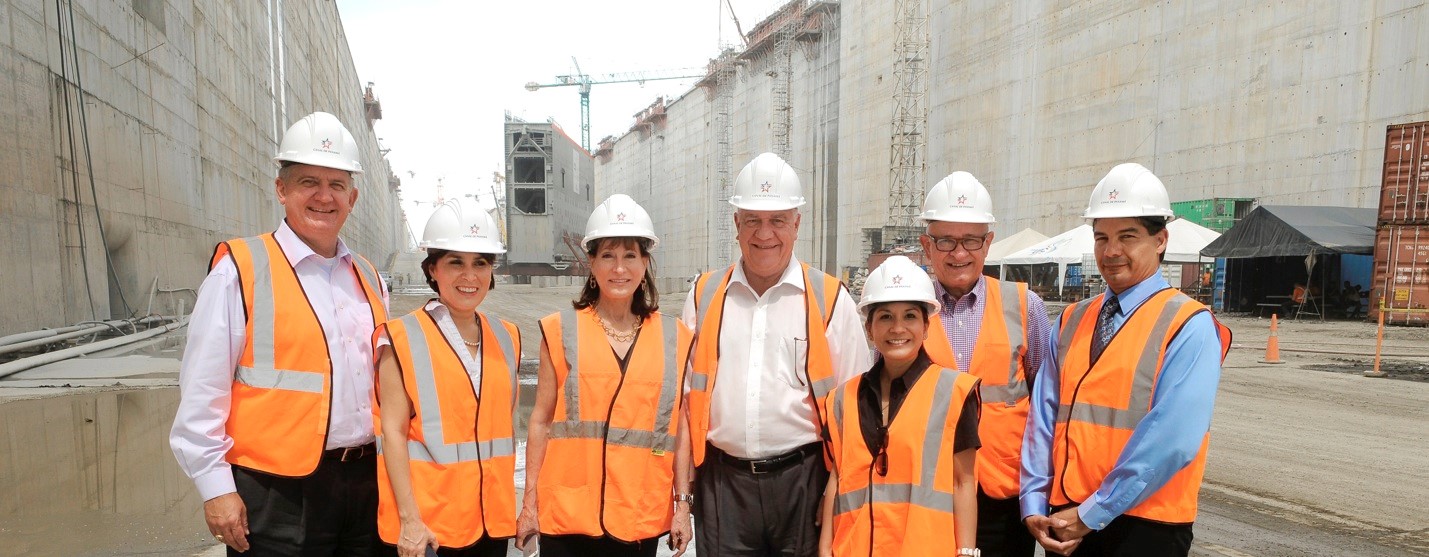
Caption: Port Chairman Janiece Longoria, Executive Director Roger Guenther and Chief Commercial Officer Ricky Kunz visit the Panama Canal in 2014.
It’s been a full year since the opening of the expanded Panama Canal, and the worldwide maritime community has taken note of this important milestone to the main passageway for ships to cross between the Pacific and Atlantic oceans.
The new canal expansion project was authorized by the citizens of Panama in 2006, nearly one hundred years after the canal was originally completed by the U.S. Government.
The goal was to build an additional lock and expand the Panama Canal to support the anticipated growth in traffic and the increasing size of deep-water ships. An engineering marvel, the new, larger third set of locks were completed June 26, 2016.
The canal’s larger, expanded third set of locks create an opportunity to transit larger vessels and lower the per-unit cost of cargo between Asia and the West Coast of South America, to and from the East and Gulf Coasts of the United States.
The container vessel, M/V COSCO Shipping Panama, made the first transit of the new expanded locks of the Canal, and Houston soon followed with its first Panama Canal-transited vessel arrival a few weeks later.
Port Houston was preparing for years for this milestone. The port’s strong, ongoing growth has allowed it to invest heavily in its container terminals, other facilities and their landside equipment, to help ensure that they can effectively work the larger ships coming through the canal.
Additionally, Port Houston has been working diligently to deepen and widen the channels that connect its two container terminals to the Houston Ship Channel.
“There is no doubt that the Gulf Coast is a strong region for cargo transiting the Panama Canal,” said John Moseley, Sr. Director of Trade Development at Port Houston. “Our Asia container trade has been our fastest growing lane the past ten years.”
“Just over ten years ago, our port had virtually no cargo coming through the Panama Canal to and from Asia, and now the container trade with Asia is a significant and fast-growing part of our business,” added Moseley.
Nearly 26 percent of Port Houston’s container business is cargo to and from Asia, and for the past several years, Port Houston’s national leadership in import container growth has been largely due to the Asia trade.
This import growth also makes shipping containers available to be loaded in turn with cargo and exported from Port Houston, supporting export growth as well.
The Panama Canal and the Houston Ship Channel, both completed in 1914, have a history together that dates back more than 100 years. Both deep waterways will continue to share bright futures.